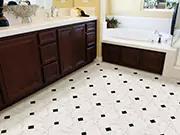My Cart
There is no product in your Cart
Tiles Calculator – Calculate How many Tiles You Will Need For Floor and Wall
Tile Calculator- a tool used to get an exact number of tiles to be installed in your space. This tool calculates the number of tile boxes required in order to completely cover the total sq. unit area. Also, it will provide you with the number of tiles in each box.
Choose the space you need tiles for
Select if it is a wall or a floor
Do You Know The Total Area?
Select Measurement Unit
Or
Select Size of Tiles
Boxes Needed :
Calculate other details
Grout
Wastage
Need an Assistance?
Steps to Calculate Number of Tiles Needed
When it comes to a home renovation or construction project that involves tiling, it is important to calculate the amount of tiles you'll need in order to complete the job. This will help you make sure you have enough tiles, and that you're not wasting money on tiles that you don't need. In this article, we will cover the steps for calculating the amount of tiles you'll need for your project.
Step 1: Measure the space where the tiles will be installed:
The first step in calculating the number of tiles you’ll need is to measure the space where the tiles will be installed. Be sure to measure the width and length of the space, as well as the height if you’re installing tiles on a wall. it is important to be as accurate as possible when measuring, as this will affect the final calculation.
Step 2: Calculate the square footage of the space:
Once you have the dimensions of the space, the next step is to calculate the square footage. This is simply the width multiplied by the length of the space. For example
Room Dimensions:
Calculations:
Step 1: Convert to Inches:
- 103 inches * 62 inches = 6386 square inches
- 6386 square inches / 144 square inches/square foot = 44.5 square feet
- 1.10 * 44.5 square feet (10% waste ratio) = 49 square feet
Step 3: Determine the size of the tiles you’ll be using:
Next, you’ll need to determine the size of the tiles you'll be using. The size of the tiles will affect the final calculation, as larger tiles will cover more area than smaller tiles. Be sure to measure the width and length of each tile, and write down the dimensions.
Step 4: Calculate the number of tiles needed:
Once you have the square footage of the space and the size of the tiles, you can calculate the number of tiles you'll need. This is simply the square footage of the space divided by the area of each tile. For example, if the square footage of the space is 120 square feet and each tile is 12 inches by 12 inches, the calculation would be 120 square feet / (12 inches x 12 inches) = 120 square feet / 144 square inches = 0.83 tiles.
Step 5: Add a buffer for waste and cuts:
It’s important to remember that when installing tiles, there will be some waste and cuts. In order to account for this, you'll need to add a buffer to the final calculation.As a general rule, you should add 10% to the final calculation to account for waste and cuts. So, if the calculation in step 4 resulted in 0.83 tiles, you would need to add 0.83 x 10% = 0.08 tiles to account for waste and cuts
Gap Size Explained
When you tile the wall or floor, there are little spaces between every tile. These aren't errors—these are necessities! Tiles will never be precisely the same size and shape, so these spaces ensure they fit easily together. Professionals call these spaces "grout lines" because they fill them with concrete-like grout.
Gap widths are usually small (1/16 inch) to noticeable (1/2 inch). Your tiles and design objectives determine the size you pick. Larger gaps complement irregularly edged handmade tiles, while smaller gaps provide a more continuous appearance.
If you want those hardly visible grout lines, then go for "rectified tiles." These undergo extra processing to ensure each tile is the same size, allowing for minimal spacing. They cost more but create that clean, continuous surface many homeowners love.
Smaller grout lines in natural stone like granite can make the whole surface appear more uniform since there is less visible grout between pieces.
Some tiles don't need gaps at all. Roofing tiles and wood siding overlap each other to keep water out. Remember to account for the gaps (positive value) or the overlap (negative value) when doing tile calculations.
Different Options For Tile Installation
The installation technique you choose for a tile project is almost as important as the tile itself. Your technique is what holds your tiles in place and will be beautiful for many years to come. Do this prior to starting: Use a tiles area calculator so you have a precise idea of just how many tiles you'll need to buy—you'll end up spending less money and frustration later!
- Thin-Set Method: The go-to choice for many projects. Using a notched trowel, you spread this cement-based adhesive in a thin layer and press tiles into place. It works brilliantly for walls, floors, and most tile materials.
- Mortar Bed (Mud Bed) Method: Ideal for uneven surfaces. Installers build up a thick mortar layer, creating a level base before setting tiles. Though labor-intensive, the results are rock-solid—especially in shower installations needing drainage slopes.
- Mastic Adhesive Method: Great for vertical applications. This ready-to-use adhesive grabs tiles quickly with no mixing. Avoid it in wet areas like showers; it’s better suited for backsplashes and splash zones.
- Peel-and-Stick Tiles: Perfect for quick makeovers and rentals. Clean the surface, peel off the backing, and stick tiles in place—no mess or permanence.
- Floating Tile Systems: These connect without adhesive and sit on an underlayment. Great for special cases where tiles may need future removal.
- Tile Layout Patterns: Turn basic tiles into works of art. Use grid layouts for clean looks or try herringbone and subway styles for more flair.
Remember to factor your pattern choice into your tile area calculator results—some layouts create more waste than others due to increased cutting requirements.
Whichever method catches your fancy, proper preparation remains essential. Clean surfaces, appropriate subfloors, and careful measuring all contribute to a gorgeous, long-lasting tile installation that'll make your space shine!
FAQs For Tile Calculator
- 1. How to calculate tiles needed for the floor or wall?
- Once you have selected the tiles of your choice, you need to measure the floor or wall where these tiles will be installed. Now divide the total sq. feet of the space by the size of the tile. This will give you the exact number of tiles to be installed.
- 2. How the tile calculator works, and how to calculate a tile's square footage?
- Tile calculator gives you the total number of boxes required to cover the total sq. feet of the area. First of all, multiply the length and width of the tile in feet. This will give you the tile’s square footage. Then simply add this number to the tile calculator, and it will provide you with the number of boxes of tiles required.
- 3. How to calculate the area?
- The simple way to calculate the area is to measure the length and width of the space and then multiply them. The answer will be the exact square footage of the area.
- 4. How many extra tiles should I buy?
- When it comes to tile projects, you should get at least 10% extra tiles in order to account for wastage and tiles broken, cracked or chipped in transit or due to mishandling. Also, in the future, if there is any breakage, you can use an extra piece of tile to mend it.
- 5. How do I calculate how much flooring I need?
- To ensure the right amount of flooring, you need to first make sure you measure the area properly. Calculate the total sq. feet of the room and divide it by the size of the tile. This will give you the exact calculation of the flooring required.
- 6. How many tiles cover 1 sqm?
- It depends on the size of the tile and how many tiles will be required to cover 1 sq m. Let’s say if there is a 600x600mm tile; then you would require around 3 tiles to cover 1 sq m. Just like that you can calculate the number of tiles according to the size of the tile.
- 7. How many tiles do I need for 1000 square feet?
- If you want to cover a space with a 1000 sq. feet area then you have to divide it by the size of the tile. The larger the size of the tile, the less number of tile pieces required and vice versa.
- 8. How much does it cost to tile a 10X10 bathroom?
- Multiply the total square feet of the area by the labour rate to get the exact cost to tile a bathroom. Also, you can add the total money spent on the tile buying with the labour rate to find out the cost to tile a 10x10 bathroom.
- 9. Can you tile in a day?
- Yes, if you have a small space, you can tile a space in a day. But if you have a spacious room to be tiled, it may take a day or two. If you get it done by professionals then they might take less time to tile a room.
- 10. What is the labour cost for laying a tile?
- The labour cost for laying a tile in India is generally Rs. 30 to Rs. 40 per sq. feet. It actually depends on the type of tile as well. If there is a ceramic tile, then the labour cost will be a little less in comparison to vitrified tiles. Installing larger tiles is marginally more expensive than installing smaller tiles. If you want to make fancy designs using multiple tiles your labour charges may go up even more.
- 11. How much tile do I need for 20x20?
- The total area calculation is 20x20=400 sq. feet. Divide this figure with the size of the tile you want to be installed. This will give you the exact number of tiles required for your space.
- 12. How do I calculate how many tiles are in a Box?
- First, calculate the number of tiles in one layer and then multiply this by using the number of layers to discover how many tiles there are in a single box. Or, you could do it in an easy manner and simply look at the box because most boxes state exactly what number of tiles are inside them. This method is beneficial in planning projects and provides an accurate count as well.
- 13. How can I calculate the number of tiles I require for my floor by determining its area?
- Multiply the two dimensions length and width to get the overall square footage measurement to know how many tiles you will need on your floor. These two dimensions should be multiplied to get the total square footage measurement. After that, calculate the area of one tile. Now calculate how many tiles you will need by dividing the total square foot area of the room by the square foot area of the tile. Then add about 10% for waste including extra for complicated shapes and uneven areas.
- 14. What is the best way to calculate the number of floor tiles for a room?
- When it comes to calculating the total area of the floor tiles to be installed in a room, measure the length and width of the room and multiply them to get the total area in square feet. Then divide the total area by the total area of each tile. Add around 10% of the total area for the tile wastage. If you're installing tiles diagonally or in a room with lots of corners, you should add an extra 15% to account for more waste.
- 15. How do I calculate the number of tiles needed for my bathroom?
- The room's measurements must always be taken into account when deciding which area needs tiling. But apart from that, do not forget to include the walls and the measurements of the floors because this is very important in calculating the approximate number of tiles that will be needed. In this way, you may plan to start and finish the tiling work at the point in time that is convenient.
- 16. Can I calculate wall and floor tiles separately?
- Yes, wall and floor tiles can be calculated individually based on their unique characteristics and specifications. This is important because tiles often come in different styles and sizes, allowing for a tailored approach for each type.
- 17. How do I account for waste or breakage when ordering tiles?
- Instead of being precise, estimation is a more efficient way of deciding the number of tiles to be bought. For instance, a 10% - 15% wastage factor is recommended to avoid running out of tiles in the course of the work. This accounts for waste during the work, ensuring you won't run out of tiles.
- 18. Do different tile sizes affect the total number of tiles I’ll need?
- In comparison to bigger tiles, using smaller tiles will undoubtedly require more individual tiles to cover the surface efficiently. This is because more surface area has to be covered using smaller tiles.
- 19. What is the best way to find out how many border tiles are needed?
- To determine how many tiles you will need for the border area, determine the length of each wall you will use as a border. Then determine one tile's length. By dividing the complete length of the boundary by the length of an individual tile, you can calculate how many tiles you'll need. For waste, don't forget to order 10–15% additional tiles than you planned. Formula:Total Border Length / Length of One Tile = Number of Border Tile
- 20. Is there a standard formula for calculating tiles for irregularly shaped areas?
- When dealing with irregular forms, divide the region into more basic shapes, such as triangles and rectangles. Calculate the area of each form, then add them up. The tile amount is then calculated using the whole area.















 DOWNLOAD CATALOGUE
DOWNLOAD CATALOGUE